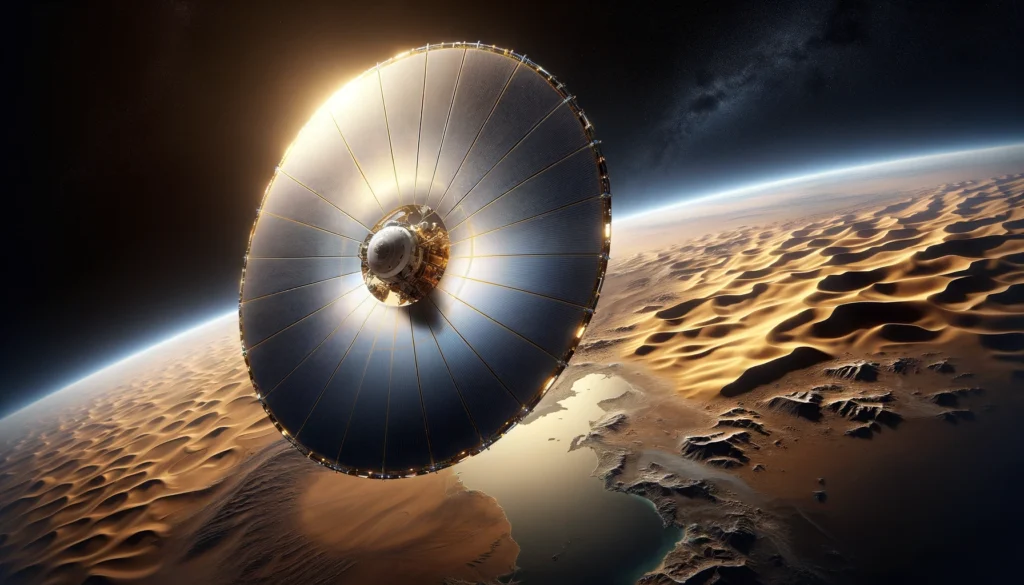
The world has gained enormously by SpaceX lowering the cost of access to space, as we will see succesfull take off and landing of its flagship Starship in the next months. Even without Starship its Falcon rocket lineup has become a low cost space elevator for all kinds of satellites, not the least of them being the Starlink constellation. These include laser and radio connected sats, but also new versions that can connect directly to the smartphone you already own. For now this will be for emergencies only but no doubt in newer versions it will be high bandwith video.
The drive to create these rockets has been the desire to colonize Mars to secure consciousness in the vast emptiness of our surrounding unconscious universe. Because of several unpredictable civilization level threats this is necessary, if only because at least some will get to enjoy the spectacle when they occur. “Well then the Yellowstone caldera exploded. Well then China nuked Russia” sounds better than the sound of the wind over barren rocks. Ignoring the threat of AI, who’s androids can wait in space no problem and be moved to Mars as bunches of grapes dragged after small rocketships (with some radiation detection?).
My interest is to slow down and halt climate change. We will and we probably will this century (2000-2100), thanks to robots, AI and renewables. But it is way harder to recover an overheated half dead planet from its state than to do it with a somewhat bruised one where the heat is not boiling the oceans and taking away half the oxygen production or doing worse.

The answer here is SpaceX and Starship. Just for the moment ignoring the enormous problem the economy poses to innovation, as Elon and SpaceX shown, because it prioritizes cashflow over wealth increases, we can say that when the Earth is modelled it has different zones where it accepts solar radiation, the top is cold, 25/75% regions are moderate and the middle 50% is hot (the equator) because the Sun’s rays hit it with the highest density through the least atmosphere.
To solve the warming crisis for decades the injection of sulfur in the stratosphere has been proposed, as a lazy ‘Ok moron, if you really insist lets say we could do this!’ kind of solution. Not thought through at all. It requires lofting massive amounts of sulfur (dioxide?) to high altitudes which would cause emissions and not present a permanent solution. Not good. But meanwhile we are lofting thousands of satellites that actually try to be inconspicuous to stargazers into relatively stabile orbits.
I don’t think its far fetched to propose to design a new type of satellite, an ultra light weight one that spreads the maximum surface of mylar (or something better) it can carry in a controlled fashion. Mylar can reflect sunlight back into space effectively canceling it out. It can lower the insolation (solar power) to the hottest regions of Earth. It has to be designed so it does not block the radiation from Earth back into space, so the altitude has to be high, but it does not need to be stationary, they can actually be controlled through Starlink (and possibly even be pushed up when they fall using laser).

This SpaceCanopy can form a band over the Equator alleviating some of the warming in the hottest regions, which will then mean that the more moderate regions have less heat to deal with as well. If they are timed right they only have to cover part of the circumference of Earth, that is if they spin along with Earth (no idea if it would mean we all wiggle a bit). @Grok doesn’t like the idea..
“Retrograde orbits (that move against the rotation of Earth) are less common than prograde orbits because they require more energy to achieve and maintain. This is because the satellite is working against the Earth’s rotation.
However, even in a retrograde orbit, a satellite wouldn’t be able to stay between the Sun and Earth. The dynamics of orbital mechanics don’t allow for a satellite to permanently position itself between two other bodies like the Sun and Earth. The closest we can get is the aforementioned Lagrange points, but even these don’t provide a permanent Sun-Earth barrier.”
(It may be the increased energy requirement is only during launch)
The idea is anyway to have a cloud of satellites orbit Earth so that they remain between Earth and the Sun or close to it. They can shield Earth from part of the light it sends to Earth and deflect it into space. Both the design and deployment of such system over time should be easy, even if the area it has to cover is enormous. It is a very safe, very controllable solution for which there will be enough resources. It can be added to all the actions we take on the ground and will especially be valuable to save our oceans from dying.
We may be able to design loftig sailplanes to do a similar thing..
This may actually help Asian countries in the medium term who are trying to deal with excessive heat and heatwaves. A gift of US ingenuity to them, preferable over war. But of course someone has to make the calculations and decide to try it.